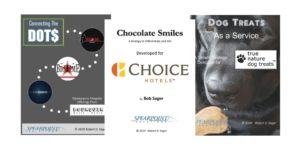Languages have always fascinated me. Be it English, Swahili, or French, to Spanish or Mandarin, I have made the effort to learn and practice them all.
However, the ‘language’ that fascinates me most is the one that focuses on analyzing gestures, facial expressions, tonality, rate of speech, etc.
Did you know that a whopping 90 percent of our communication is non-verbal?
In case you are wondering, I did not pluck that number out of thin air.
Albert Mehrabian was the first researcher of body language who broke down the components of face-to-face conversation, and discovered that 55% is non-verbal, 38% is vocal, and ONLY 7% comprises words.
Also, since non-verbal communication (NVC) is influenced by our cultural and environmental upbringing, it is largely unconscious.
Which goes to show – if we are only listening to the words that someone is speaking, we are missing out on so much more information, emotions, and intentions that are being relayed to us.
Some key elements of non-verbal communication include:
Advertisement
Is your business life FUN – or stressful?
Our Strategies Subscription will help you easily beat the competition, enhance your profits and have more FUN.
Get access to three strategies at no charge by clicking here or on the image below.
Facial Expressions
For the most part, the meaning behind facial expressions is mostly universal and helps to communicate emotions like anger, sadness, joy, worry through smiles, frowns, widened eyes, raised eyebrows, etc. Even different smiles can communicate different messages. #smirks
Body Gestures
Do you know someone who gesticulates a lot when they are nervous, and their hands fly all over the place? Have you ever observed someone touching their neck when they are feeling uncertain or perhaps lying? Did you ever notice a person tilting their head to the side when they seemed doubtful or incredulous about what they were hearing? We can use gestures to emphasize what we are saying, either consciously or unconsciously.
Posture & Body Orientation
As a Career Coach, I pay a great deal of attention to how my clients sit when prepping for an interview because our posture does say a lot about our self-confidence, level of interest, attentiveness, and even, dominance. Sitting or standing with your open, in a relaxed manner conveys receptiveness to ideas, while tense positions like crossed arms or clenched fists can signify defensiveness or discomfort. Try and visualize security staff at a concert. #stern #stressedposture
Eye-Contact
It is the foundation to face to face communication. Imagine having an important conversation with a boss, a peer, a mentor, or a significant other and see them really making eye contact with you. Do you not feel their interest? Their attention? Their respect? Does it not make you feel ‘heard’ and ‘understood’? Now imagine speaking to someone who is busy scrolling through their phone as you speak; their attention completely divided as they swipe through Facebook and Insta reels, check their messages, or email. How does that make you feel? Is communication even happening?
Advertisement
Is your business life FUN – or stressful?
Our Strategies Subscription will help you easily beat the competition, enhance your profits and have more FUN.
Get access to three strategies at no charge by clicking here or on the image below.
Touch
The power of touch can be best understood by observing the relationship between a mother and her new-born. Through her touch, she can convey affection, love, comfort, and security. It is also important to remember that touch -as a form of communication – can differ across various cultures, social groups, and individuals. As an example, here in the Middle East women are advised against the handshake, but to allow a local man to offer his hand first. This helps to avoid any faux pax’s and shows respect for other cultures. When in doubt, ask.
Proxemics
This is how we use personal space and distance when communicating with others, and is classified into four types: Intimate, Personal (arm’s length), Social (Between 4-12ft), and public distance. Diverse cultures have their own norms around personal space – for example Arabs tend to move closer to people they are communicating with, while Americans opt for more distance to feel comfortable. Proximity helps us communicate intimacy, respect, and boundaries.
Vocal Tone & Pitch
Our voices communicate so much more than we realize via our tone of voice, pitch, volume, and even pace. Notice how fast someone speaks when they are anxious, but how the same person can sound relaxed when they are at the beach. These vocal cues easily convey emotions and attitudes and can be further revealing when there’s emphasis placed on certain words or phrases.
Advertisement
Is your business life FUN – or stressful?
Our Strategies Subscription will help you easily beat the competition, enhance your profits and have more FUN.
Get access to three strategies at no charge by clicking here or on the image below.
Whether we are in the boardroom, or at home with our families, understanding the subtleties of non-verbal communication can help us to become BETTER communicators, by helping others to feel understood.
As leaders, when we enable a space to help our teams feel heard, we engender psychological safety, which leads to trust and openness, and helps our employees become more engaged. Why? Because we are responding with PRESENCE! Something as simple as maintaining eye-contact when engaging with our direct reports can lead to them feeling understood and appreciated. By responding with empathy, a leader demonstrates care, and support – which inevitably leads to a more positive work environment that promotes well-being and productivity.
How well do you use non-verbal communication in your interactions with others?

Cynthia is a holistic life and career coach based in Dubai, UAE. She has spent over 15 years working in the Hospitality sector in different parts of the world and is passionate about all things pertaining to self-development, leadership development, holistic personal development, the impact of culture, and how to cultivate incredible people skills. Cynthia thrives on helping people leverage their talent, skills, and expertise to lead their best lives.
Contact Information
Email: bespokeresumes@aol.com
LinkedIn: linkedin.com/in/cynthiaharfoush
Header Image Credit: Karolina Grabowska. Find it here.






